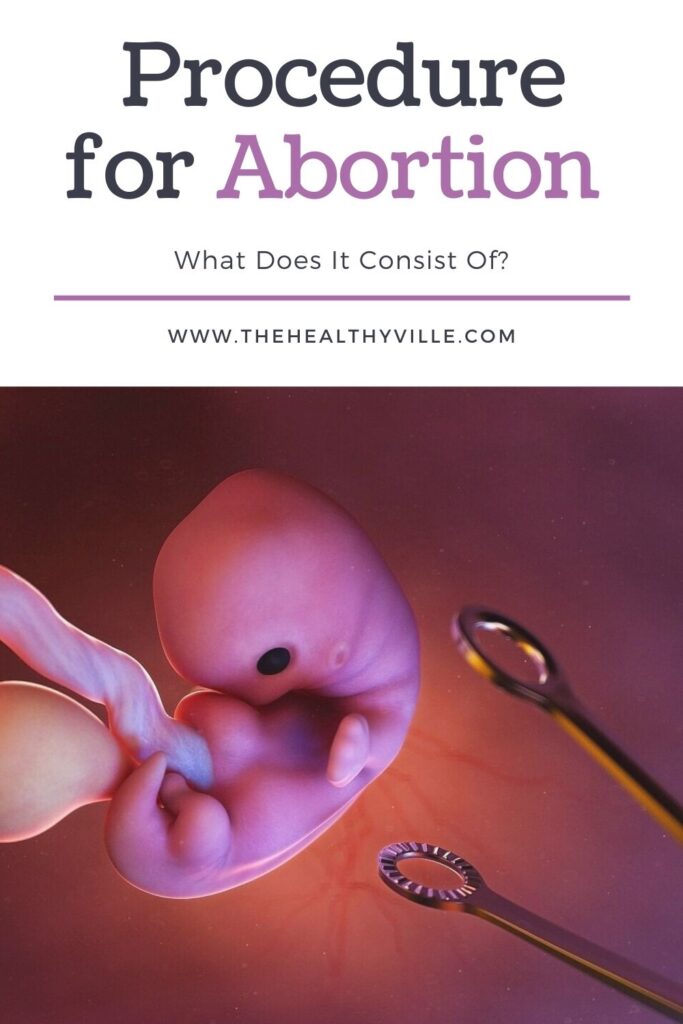The procedure for abortion depends on the reason and how far the mother has gone before the decision is made. Learn more about them.
Abortion represents an issue that, in many countries, is just under legal discussion for its regulation. In other regions there are legislative frameworks that even determine the forms of prescription. We tell you about them and the procedures.
Talking about abortion can be shocking to many people. Whether due to ideologies or religious beliefs, it is not a topic that is mutually agreed by the entire population. Even within the same country, there are usually regions with dissimilar laws on the same subject.
The reasons for practicing this type of abortion vary, ranging from personal decisions to clinical situations of health risk for the mother. There are also legal stipulations to perform them on controlled sites with adequate security.
What is an induced abortion?
We speak of induced abortion when a pregnancy is interrupted, on purpose. That is, the decision is made to stop a pregnancy, before week 20.
The week 20 limit is purely technical. Almost all accepted definitions of abortion there stipulate the barrier between a viable fetus and one that is not. This means that if an early birth happens, the chance of survival is greater if the pregnancy has already passed halfway.
This goes beyond the laws in this regard. There are states that allow induced abortion until week 20, others until week 12 or 8. This variability does not affect the health concept of the procedure.
If the interruption of the pregnancy happens after the middle of the pregnancy, there is no abortion. Typically, these circumstances occur with mothers who suffer from diseases that make it impossible to continue the process, such as maternal pulmonary hypertension.
Based on the time the pregnancy has evolved, the induced abortion may be performed with one or another technique. This is so to ensure minimal complications for the woman and reduce the risks of infection or subsequent bleeding.
Procedure for abortion
The legal techniques in the countries which endorse the procedure for abortion are two, according to the weeks in which they are applicable. Thus, we have options for the first quarter and for the second quarter.
First trimester techniques
During the first trimester of pregnancy, that is, up to the 14th week of pregnancy, the options are a combination of misoprostol and aspiration. As we will discuss immediately, there are ways that are more recommended by doctors than others.
Misoprostol is a drug with long-known abortifacient properties. Almost all countries regulate its sale so that there is no abuse of the drug. The effect it produces is an increase in uterine contractions.
One way to carry out drug-induced abortion is to combine it with methotrexate, which has the property of inhibiting cell replication. Together, they stop fetal growth and push the contents of the uterus out.
Instead of methotrexate, in clinics, misoprostol in combination with mifepristone to speed up the process. In any case, the maximum prescription time is up to 10 weeks of gestation. In the course of the next 6 hours, the abortion occurs. There are women who take longer, up to 48 hours.
The third option is aspiration, which doctors do not recommend beyond the 16th week of pregnancy. It consists of sucking the fetus and the placenta out with a special device through the vagina.
Due to the form of the procedure, there are some subsequent aches and pains for the woman, as well as bleeding. In any case, it takes one day to complete, and after a short period of observation, the woman can return to her home.
Induced abortion in the second trimester
As in the second trimester the fetus has grown, the situation is more complex to specify from the medical aspects. The options are two: dilation and induction.
In dilation, the reality is that doctors combine techniques to specify the abortion. They use instruments to dilate the uterus, then a vacuum with suction (as in aspiration), to finally proceed to curettage or scraping the internal area of the organ.
Recovery is usually immediate and it is usual for the woman go home on the same day to return home. However, due to the type of approach, the woman needs to take some precautions in the month after dilation.
Regarding induction, the technique is based on stimulating a kind of labor. Therefore, it is reserved for very advanced cases between week 15 and 20 of gestation.
Medications are administered to induce contractions and the pain is similar to that of women in labor. If necessary, if an expulsion does not take place, the medical team resorts to aspiration or dilation, in order not to leave remains inside the uterus that could complicate the subsequent evolution.
Abortion happens within a legal framework
It is worth emphasizing that these procedures for abortion are legal in some countries, while not in others. There are many differences between the laws of one region of the world and another, so not everything applies equally in terms of legality.
The performance of a technique of this type, whatever it may be, must respect the biosecurity canons so as not to compromise the life of the woman who performs it. It is essential that licensed clinics have the appropriate service for this purpose.
Don’t forget to SHARE the procedure for abortion with your friends and family on your social networks!

